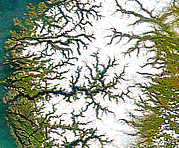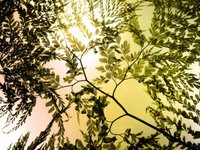Sarah's Theory on Process and Fractals



In the last ten to fifteen years, corporate America has concerned itself much more with process than it had since mass production and Henry Ford. This time it's different, of course...we in "the industry" aren't talking about the process of making widgets, we're talking about the process of producing knowledge products, like software, and engineering designs. This is tough stuff, and you're never going to put numbers into a machine, crank the handle, and out will come an original thought.
This brings us to some new theories. Here's one, why process focus is like fractals:
Suppose you were six years old and had to cut a shape out of construction paper. You would probably cut a square, or a circle, or maybe a triangle. (or as close to those as your six-year-old fingers would get.) You wouldn't try to cut a fern shape, or a broccoli shape, or a riverbed shape with all its twists and turns. Why? Because circles and squares involve a lot less to cut than things as convoluted as ferns and broccoli.
So the question has to be, how is it possible that ferns and broccoli can arise from nature?
It's because the way things grow naturally does what ever is simplest process-wise, not whatever is simplest in form. It turns out that ferns and broccoli and rivers are fractal or self-similar: you can look at big pieces and small pieces and they have the same shape. Computer artists have discovered the ease of making fractals...you use the same code for the small pieces and simply scale up for bigger pieces. It's very easy to make a fractal look complicated with ridiculously little code, because that code is reused at all scales.
Compare this to making a square or a circle. You have a single shape existing on only one scale. Things are done once, and a "thing" comes out.
That is similar to the way people built, say, software, before the process focus. You examined a problem, built some code to solve it, and you were done. Next problem: build different code.
Now of course, people are much more aware that it's better (for reliability, maintainability, and even initial development cost of new software) if you can create reusable code, work out the bugs, and then keep using what works.
This is what nature does with fractals!
First photo is from the satellite Seawifs, of a river basin in Norway. See http://classes.yale.edu/fractals/Panorama/Nature/Rivers/Rivers.html


0 Comments:
Post a Comment
<< Home